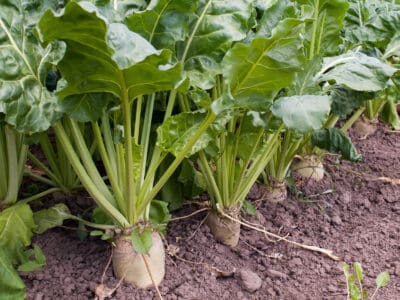King Rat Snake
.jumbotron {
background-image: url(“https://a-z-animals.com/media/2022/04/shutterstock_1872962515-400×300.jpg”);
}
}
@media only screen and (min-width: 641px) and (max-width: 920px) {
.jumbotron {
background-image: url(“https://a-z-animals.com/media/2022/04/shutterstock_1872962515-470×370.jpg”);
}
}
@media only screen and (min-width: 921px) {
.jumbotron {
background-image: url(“https://a-z-animals.com/media/2022/04/shutterstock_1872962515.jpg”);
}
}
King Rat Snake
Elaphe carinata
When threatened or frightened, the king rat snake has the ability to produce a foul-smelling substance out of self defense.
King Rat Snake Scientific Classification
- Kingdom
- Animalia
- Phylum
- Chordata
- Class
- Reptilia
- Order
- Squamata
- Family
- Colubridae
- Genus
- Elaphe
- Scientific Name
- Elaphe carinata
Read our Complete Guide to Classification of Animals.
King Rat Snake Conservation Status
King Rat Snake Facts
King Rat Snake Physical Characteristics
- Color
-
- Brown
- Black
- Lifespan
- 15-20 years
- Length
- Up to 8 feet
- Venomous
- No
- Aggression
- High
This post may contain affiliate links to our partners like Chewy, Amazon, and others. Purchasing through these helps us further the A-Z Animals mission to educate about the world’s species..

Spiders that fly! Fish that walk! And 1000+ more incredible animals. Discover them all for FREE
.photo-gallery {
–margin: 0px auto 0px;
–padding: 0px 0px 0px 0px;
}
.gallery-link {
background-image: url(“https://a-z-animals.com/media/2022/04/shutterstock_1645239232-1024×614.jpg”);
background-repeat: no-repeat;
background-size: cover;
background-position: center;
height: 500px;
justify-content: center;
text-align: center;
align-items: center;
display: flex;
border: 2px solid #000;
}
.gallery-link img {
height: 50%;
}
@media only screen and (max-width: 768px) {
.gallery-link {
height: 300px !important;
}
}
View all of the King Rat Snake images!
When threatened or frightened, the king rat snake has the ability to produce a foul-smelling substance out of self-defense.
The king rat snake is named for its habit of consuming other snakes, including venomous cobras and vipers. It appears to be highly immune to their dangerous venom. While they can be kept as a pet, their aggressive nature can make them very difficult to handle. Fortunately, they are not considered to be all that dangerous. Their appearance makes them seem more threatening than they actually are in reality.
5 King Rat Snake Amazing Facts
- The king rat snake is also known by the name of Taiwan stink snake or the stinking goddess. This refers to the anal glands which produce a strong odor out of self-defense.
- The king rat snake mates in the spring and produces eight to 14 eggs per clutch. The female protects her eggs until they hatch in the summer.
- The king rat snake appears to have a modified neck vertebrate to crush eggshells in its mouth.
- Although this species was considered to be a delicacy in some parts of Asia, consumption has dwindled in recent years.
- Members of the Elaphe genus are thought to have well-developed vision compared to most other snakes. They have the ability to detect movement to a much greater degree.
Where to Find King Rat Snakes
The king rat snake is primarily found in the forests, meadows, rice paddies, and shrubs of China, Taiwan, northern Vietnam, and the Ryukyu islands (which are currently part of Japan) up to altitudes of more than 6,000 feet. They prefer to live in a place with plenty of cover and hiding spaces to protect them against dangerous predators.
King Rat Snake Scientific Name
The scientific name of the king rat snake is Elaphe carinata. Elaphe is a Greek word meaning deerskin or stag, whereas carinata is a Latin word meaning keeled, which refers to the prominent scales along the snake’s body. Three subspecies are currently recognized throughout its natural range.
King Rat Snake Population & Conservation Status
According to the IUCN Red List, the king rat snake is considered to be a species of least concern. It is not known how many exist in the wild, but numbers do appear to be decreasing. Habitat loss appears to be the greatest continuing threat.
How to Identify the King Rat Snake: Appearance and Description
A full grown king rat snake is characterized by a long, sturdy body covered in many rows of keeled scales (meaning they’re highly prominent and heavily ridged). They also have large eyes and somewhat square heads. Many different color morphs exist in the wild, which can make them very difficult to identify. Some morphs exhibit a solid color such as olive brown or olive yellow, whereas others possess black odd-shaped markings all over their body. In captivity, some of the popular color morphs include albino and axanthic. Most full grown specimens only grow about 5 or 6 feet long, but the maximum size is thought to be around 8 feet.
Here is how to identify the king rat snake:
- Long, sturdy body measuring up to 8 feet
- Square-shaped head
- Large eyes
- Heavily keeled scales
- Olive yellow or olive brown body color
- Odd-shaped black markings may sometimes be present
King Rat Snake: How Dangerous Are They?
The king rat snake does not produce any venom of its own. Instead, it subdues prey by constricting them to death with its body. Although they are incapable of producing venom, they can deliver a rather painful bite that causes bleeding and swelling. If you ever happen to be bitten, then the wound should be cleaned thoroughly to prevent infection; you might want to seek medical attention as well. The snake’s most important defense mechanism when threatened or frightened is the foul smell they produce from the anal gland that can cause severe nausea in people.
King Rat Snake Behavior and Humans
The king rat snake is considered to be highly aggressive toward humans. They would prefer to run away and hide, but if directly threatened, the snake will stand its ground and attack. In the wild, they should be generally avoided. It is possible to keep a king rat snake as a pet, but they are considered to be difficult to handle and care for, which means they’re best suited for more experienced snake owners.
These snakes will need an enclosure at least 33 liters large with plenty of hiding spaces and a suitable substrate. The temperature should be set to 72 degrees Fahrenheit at the cool end and 82 degrees at the warm end. They should be fed only once every 10 to 14 days. Frozen rodents or birds, measuring no larger than the widest part of their body, are usually sufficient to satisfy their appetite. These snakes take a few years to reach their full grown size, but many are sold as adults rather than juveniles. They tend to have a lifespan lasting 15 to 20 years.
One of the most stressful periods in any snake’s life is when it begins to shed. This should take place every several weeks. The skin should come off in a single piece, and a water bowl should be placed in the enclosure so the snake has a place to soak. If the snake is struggling to shed its skin, then it could be a sign of a wider problem. The king rat snake should never be handled during this period.
View all 45 animals that start with K
King Rat Snake FAQs (Frequently Asked Questions)
Are king rat snakes venomous?
No, they do not produce any venom.
How do king rat snakes hunt?
The king rat snake is an active and agile hunter. After surprising the prey, the king rat snake suffocates it by constricting the prey with its body. Often it swallows the prey whole.
Are king rat snakes aggressive?
Yes, they are considered to be highly aggressive and difficult to approach.
Where do king rat snakes live?
The king rat snake prefers to live in forests and meadows throughout East and Southeast Asia.
What do king rat snakes eat?
The king rat snake has a varied diet consisting of rodents, frogs, birds and their eggs, insects, lizards, and other snakes.
How big do king rat snakes get?
The king rat snake can grow up to 8 feet in size from head to tail.
Are king and rat snakes the same?
Yes, the king rat snake is considered to be a type of rat snake. The genus to which they belong includes many other species of Asian rat snakes. But this species is also known as the Taiwan stink snake.
Sources
- , Available here: https://snakesoftaiwan.com/elaphe-carinata.htmlhttp://enigmareptiles.weebly.com/king-rat-snake.html

















